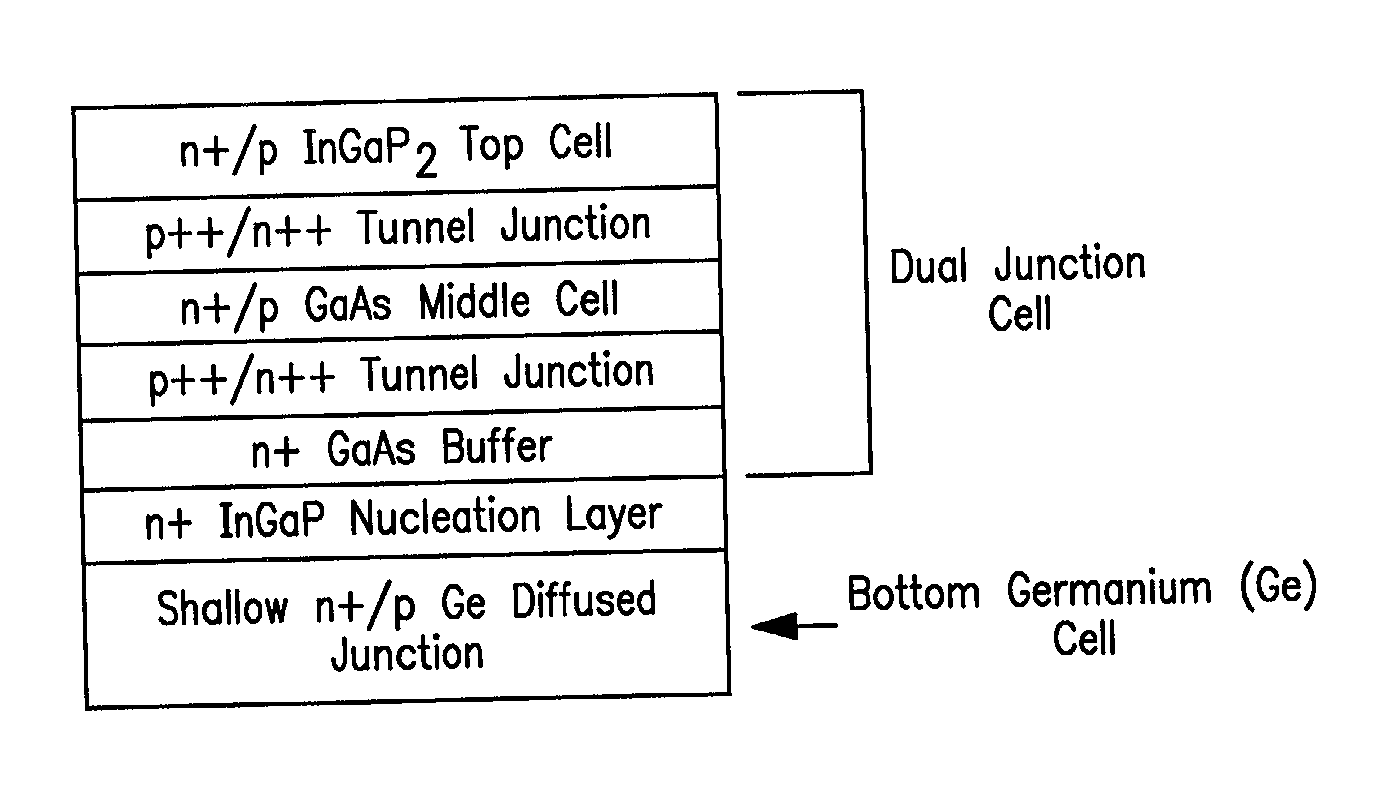Apparatus and method for optimizing the efficiency of germanium junctions in multi-junction solar cells
a solar cell and efficiency optimization technology, applied in the direction of photovoltaics, electrical apparatus, semiconductor devices, etc., can solve the problems of less than optimal performance, the requirement for solar cells to meet the needs of more sophisticated applications has not kept pace with demand, and the optimization of the germanium junction cannot be accomplished withou
- Summary
- Abstract
- Description
- Claims
- Application Information
AI Technical Summary
Problems solved by technology
Method used
Image
Examples
Embodiment Construction
[0018] The present invention now will be described more fully with reference to the accompanying drawings, in which the preferred embodiments of the invention are shown. The present invention may, however, be embodied in many different forms and should not be construed as being limited to the embodiments set forth herein; rather these embodiments are provided so that this disclosure will be thorough and complete and will fully convey the invention to those skilled in the art.
[0019] FIG. 2 is a block diagram that shows a schematic cross section of a triple junction solar cell in which an embodiment of the present invention has been implemented. In the present invention a phosphorus containing compound, InGaP, with a lattice parameter equal to that of the germanium substrate is inserted as a nucleation layer between the germanium substrate and the overlying dual junction epilayers as shown in FIG. 2. The indium gallium phosphide (InGaP) nucleation layer serves as a diffusion barrier t...
PUM
 Login to View More
Login to View More Abstract
Description
Claims
Application Information
 Login to View More
Login to View More - R&D
- Intellectual Property
- Life Sciences
- Materials
- Tech Scout
- Unparalleled Data Quality
- Higher Quality Content
- 60% Fewer Hallucinations
Browse by: Latest US Patents, China's latest patents, Technical Efficacy Thesaurus, Application Domain, Technology Topic, Popular Technical Reports.
© 2025 PatSnap. All rights reserved.Legal|Privacy policy|Modern Slavery Act Transparency Statement|Sitemap|About US| Contact US: help@patsnap.com



